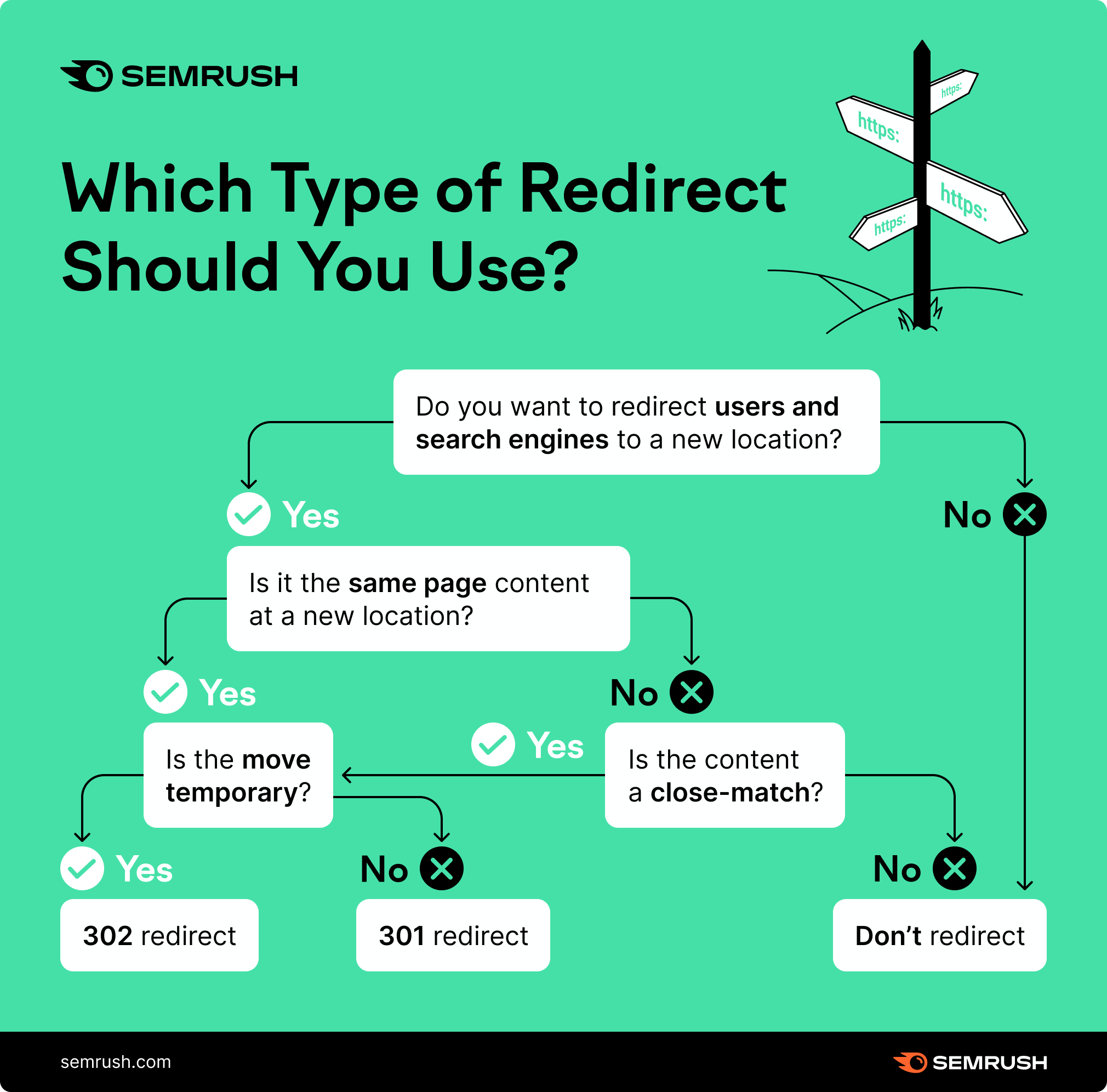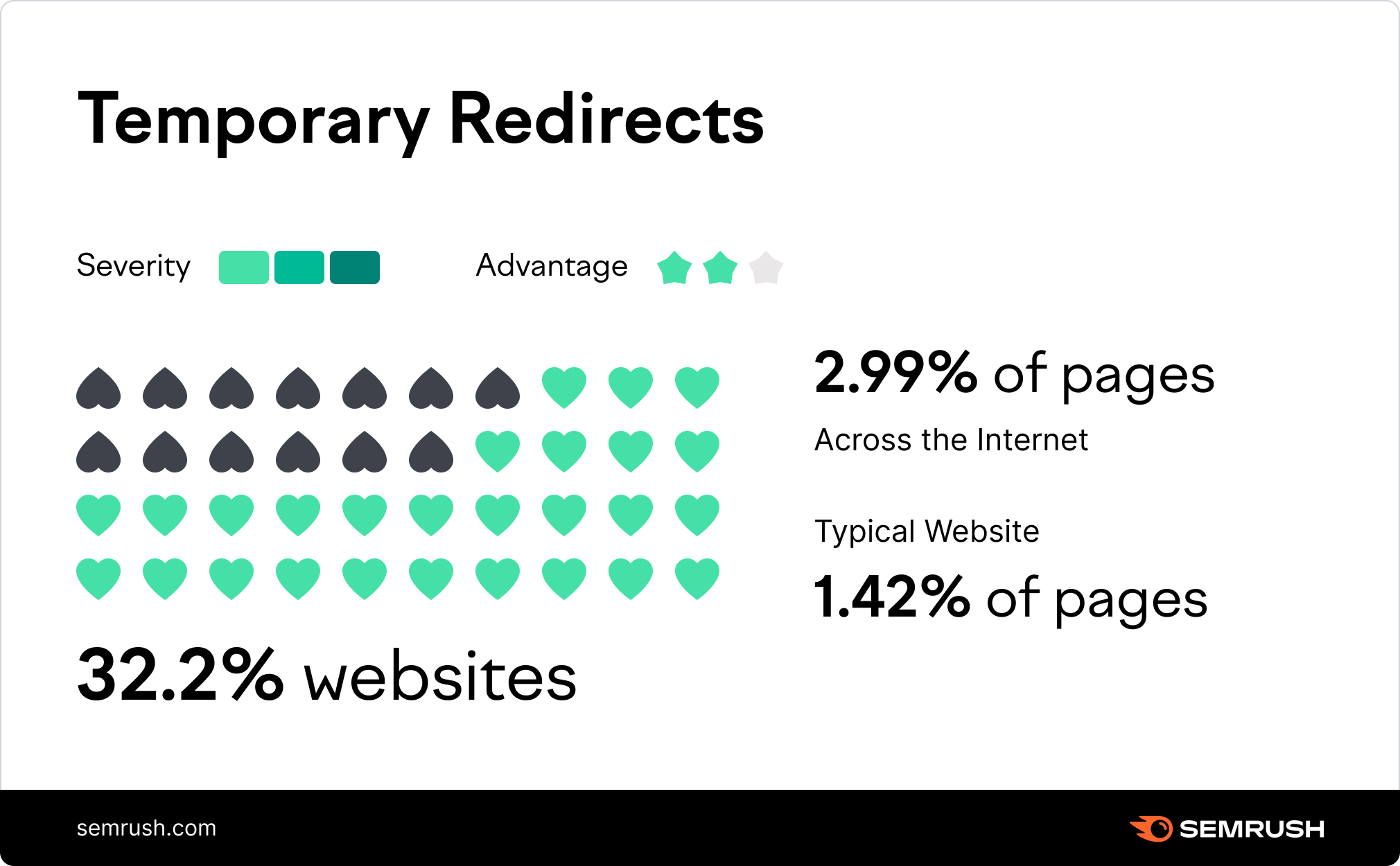Almost every website change its structure, delete the page, and regularly transfer from one domain to another. Dealing with redirects directly is essential to try not to lose rankings and help with looking through motors comprehend the progressions you have done.
Redirects have a status code beginning with number three ( i.e., 3XX). There are 100 distinct conceivable status codes yet a couple is executed to convey specific data.
What do Redirects Mean?
Redirects are a system for transferring traffic (and bots) to a URL other than the bone they mentioned.
For what reason would it be a good idea for you to use redirects?
There are two reasons why you should use redirections when moving web pages.
More customer experience for guests – You do not need guests to get hit with a” runner not plant” warning when they are trying to get to a runner that’s moved. redirects take care of this issue via faultlessly transferring guests to the substance’s new location.
Help with search engines comprehend your website– Redirects tell web indicators where content has moved and anyhow of whether the move is long-lasting or temporary. This goods if and how the runners show up in their list particulars.
Why is redirecting so important?
Visiting an error landing page is anything but a decent hassle for visitors who are hoping to see a live web page. This outgrowth can make visitors skim or leave the website and imply that changing over this customer into a customer or client, or indeed a dispatch supporter drops monstrously.
At the point when we click a connection, we hope to be taken to the significant page, not served an error since it has been either moved or taken out.
Still, that’s when there’s no divert set up
Use a divert to advance traffic to the new URL and you’ll have a glad visitor who, even though the URL is unique, actually winds up where they demanded to go. You have taken them directly from A page to page B.
At the point when a runner page a 404 status (or another not plant error such a 410), a web crawler will ahead long drop it from the record — this implies that it’ll presently do not hold any rankings on the SERPs that it had.

Anyhow of whether the runner is just compactly moved, you’ll in any case have to illuminate internet hunt bots.
What is further we should likewise not fail to remember that any backlinks that punctuate a 404 runner won’t be counted by the computation and are, along these lines, being squandered ( indeed, this does do and an examination of a portion of the world’s most well-given brand’s spots uncovered that there are in a real sense a large number of inconceivable connections going to squander due to this issue).
Neglecting to execute diverts truly can bring about lost web indicator rankings, just as dissatisfied guests.
So anyhow of whether you’re redesigning your point and your runner’s URL structure is changing, moving to another area, or indeed regularly tidying up old substance, you want to comprehend the significance of sidetracks when you should use them and which type to use.
When would it be a good idea for you to use redirects?
When to Use Redirects implies
- You move the URL of a website runner (from URL A to URL B).
- You abolish a runner that gets business or has backlinks pressing it.
- You redevelop your point and the construction changes.
- You move your point to another area name.
- You consolidate at least two spots.
- You dislocate from HTTP to HTTPS.
- You want to avert dupe content on following slice URLs or non-www URLs.
Now and also, you just need to redirect a solitary URL (or a progression of single URLs) or indicator on a point. On different occasions, you want to redirect a whole space. In any case, you want to comprehend that there are colorful feathers of redirects that you want to use contingent upon the circumstance and the ultimate ideal.
Different Types of Redirects
To get know about What do Redirects Mean you have to get a little knowledge about types of redirects. Redirects are parted into two gatherings server-side redirects and client-side redirects. Each gathering contains colorful redirects that web crawlers see as one or the other temporary or permanent. So you will have to use the right redirect for the job that needs to be done to stay down from implicit SEO issues.
Server-side redirects
A server-side redirect is one where the garçon chooses where to redirect the customer or web straggler when a runner is mentioned. It does this by sending a 3XX HTTP status code.
Assuming that you are doing SEO, you will use server-side redirects more frequently than not, as client-side redirects have a couple of disadvantages and will generally be more reasonable for veritably unequivocal and uncommon use cases.

Then are the 3XX redirects each SEO should know:
301 redirect
A 301 redirect advances guests to the new URL and tells web hunt tools that the asset has for all time moved. When faced with a 301 redirect, web dawdlers typically drop the old redirected URL from their train for the new URL. They also move PageRank ( position) to the new URL.
302 redirect
A 302 redirect advances guests to the new URL and tells web indicators that the asset has compactly moved. When stood up to with a 302 redirect, web dawdlers keep the old URL ordered even though it’s redirected.
Be that as it may, in case you leave the 302 redirect set up for quite a while, web hunt tools will presumably begin dealing with it like a 301 redirect and record the new URL all effects being equal.
Like 301s, 302s move PageRank. The thing that matters is the exchange occurs”in the rear.” at the end of the day, the” new” URL’s PageRank moves in the rear to the old URL (except if web indicators are dealing with it like a 301).
303 redirect
A 303 redirect advances the customer to an asset like the one mentioned and is a temporary type of redirect. It’s regularly employed for effects like averting structure resubmissions when a customer hits the” reverse” button in their program. You won’t typically use 303 redirects for SEO purposes. Assuming you do, web hunt tools might regard them as either a 301 or 302.
307 redirect
A 307 redirect is as old as a 302 redirect, away from it holds the HTTP fashion (POST, GET) of the first supplication when playing out the redirect.
308 redirect
A 308 redirect is as old as a 301 redirect, except it holds the HTTP fashion for the first supplication when playing out the redirect. Google says it regards 308 redirects as old as redirects, yet utmost SEOs actually use 301 redirects.
Client-side redirects
A client-side redirect is one where the program chooses where to redirect the customer. You for the utmost part should not use it except if you do not have another choice.
307 redirect
A 307 redirect typically happens client-side when a point utilizes HSTS. This is because HSTS lets the client’s program know that the garçon just acknowledges secure (HTTPS) associations and to play out an inward 307 redirect whenever requested to demand unstable (HTTP) means from the point latterly on.
Mets refresh redirect
A meta invigorate redirect advises the program to redirect the customer following a set number of seconds. Google gets it and will naturally regard it as old as 301 redirect. In any case, when getting some information about meta redirects with detainments on Twitter,
Google’s John Mueller said, “In case you need it dealt with like a redirect, it’s a good idea to have it carry on like a redirect.”
Anyhow, Google does not suggest exercising them, as they can be mistaken for the customer and are not upheld by all programs. Google suggests exercising a garçon- side 301 redirect all effects being equal.
JavaScript redirect
A JavaScript redirect, as you presumably suspected, utilizes JavaScript to educate the program to redirect the customer to an alternate URL. Certain individuals accept a JS redirect causes issues for web hunt tools since they need to deliver the runner to see the redirect.
Albeit this is valid, it’s not generally an issue for Google since it renders runners so quick currently. ( Still, there could in any case be issues with other web indicators.) All altogether, it’s actually better to use a 3XX redirect where conceivable, yet a JS redirect is typically fine assuming that’s your main choice.
Normal Ways to Apply Redirects
The way that redirects are carried out contrasts counting upon your web garçon design and CMS. When in mistrustfulness, then are presumably the most extensively honored ways that you can execute redirects
.
- By altering your points .htaccess record (Apache server).
- By adding a garçon forecourt to yournginx.conf record (when your website runs Nginx).
- By bringing in the mod_redirect module and exercising URL.redirect (on a Lighttpd server).
- Exercising the Easy Redirects Manager plugin in case you use WordPress.
- Exercising the built-in URL rewrites module on the off chance that you run Magento.
- Exercising the built-in URL redirects work assuming you use Shopify.
As appertained to over, meta refresh redirects and JavaScript redirects (just as PHP redirects) are different choices to redirect guests, yet they do not come suggested as an SEO-friendly technique.
Related: A simple way to Find 301 Redirect Error with Botify
Questions regarding redirects for SEO
There are so many different questions about What do redirects mean. Some of them are following:
1. Are redirects awful for SEO?
All effects considered, it depends, still much of the time, no. redirects aren’t awful for SEO, but rather as with similar in numerous effects handed that you set up them directly.
An awful implementation may bring a wide range of difficulties, from loss of PageRank to loss of business.
Redirecting webpage is an irrefutable demand on the off chance that you roll out any advancements to your URLs. All effects considered you would rather not see all the delicate work you put into erecting a crowd of people and assembling connections to go down the channel.
2. Why should I redirect a website URL?
By redirecting a changed URL, you shoot the two guests and dawdlers to another URL, in this manner de-emphasizing vexations. At whatever point you play out any kind of support on your point you’re really taking stuff out.
You could be erasing a post, changing your URL structure, or moving your website to another domain. You need to displant it or visitors will arrive on those stressed 404 webpages. Assuming you roll out little advancements, as abolishing an obsolete composition, you can redirect that old URL with a 301 to a significant new composition or give it a 410 to say that you canceled it. Try not to abolish stuff without an arrangement. Also do not redirect your URLs to irregular papers that have nothing to do with the composition you are erasing.
Greater projects need a URL relocation methodology. Going from HTTP to HTTPS for illustration inclining further toward that latterly on in this composition, changing the URL ways, or moving your point to another area. In these cases, you should check out every one of the URLs on your point and guide these to their unborn areas in the new domain. Posterior to figuring out what goes where you can begin redirecting the URLs. Use the difference in address device in Google Search Console to advise Google of the changes.
3. What are 301 redirects? Likewise a 302 redirect?
Use a 301 redirect to for all time redirect a URL to another destination. Consequently, you tell both visitors and crawlers that this URL changed and another ideal plant. This is the most extensively honored redirect. Try not to use a 301 to use that particular URL at any point down the road. Assuming this is the case, you want a 302 redirect.
A 302 redirect is a supposed impermanent redirect. This implies that you can use this to say this piece of content is compactly inapproachable at this position, still, it’ll return.

4. What is a simple way for managing redirects in WordPress?
We may be kindly one-sided, still, we suppose the redirects manager in our Yoast SEO Premium WordPress plugin is inconceivable. We realize that numerous individuals battle to comprehend the idea of redirects and the kind of work that goes into adding and overseeing them. That’s the reason one of the top effects we demanded our WordPress SEO plugin to have was a simple to use redirect device. I suppose we succeeded, yet do not believe me.
The redirects manager can help set with adding and overseeing redirects on your WordPress point. It’s an essential device to keep your point new and sound. We made it as simple as could be anticipated. This is what happens when you abolish a post
- Move a post to waste
- A communication springs up saying that you moved a post to waste
- Pick one of two choices given by the redirects manager
- redirect to another URL
- Serve a 410 Content canceled title
- Assuming you pick redirect, a modular opens where you can enter the new URL for this specific post
- Save and you are finished!
5. What’s a redirect checker?
A redirect checker is a device to decide whether a specific URL is redirected and to anatomize the way it follows. You can use this data to observe backups, analogous to a redirect chain in which a URL is redirected generally, making it a lot harder for Google to slide that URL — and giving guests a not exactly heavenly customer experience. These chains constantly do without you being familiar with it assuming you abolish a runner that was at that point redirected, you add one further part of the chain. Therefore, you want to watch out for your redirects, and one of the instruments to do that’s a redirect checker.
6. Do I’ve to redirect HTTP to HTTPS?
At whatever point you intend to move to the veritably important wanted HTTPS convention for your point — you know, the bone with the green latch in the position bar — you should redirect your HTTP business to HTTPS. You could cross paths with Google in case you make your point accessible on both HTTP and HTTPS, so keep an eye out for that. Also, programs will show a NOT SECURE communication when the point is — you got it — not got by an HTTPS association. In addition, Google inclines toward HTTPS locales, because these will generally be hastily and safer. Your guests anticipate fresh security also.
Therefore, you really want to set up a 301 redirect from HTTP to HTTPS. There are two or three systems of doing this and you should design this to ensure everything goes like it ought to. To begin with, the favored system of doing this is at garçon position. Discover on what kind of garçon your point is running (NGINX, Apache, or commodity different) and observe the law anticipated to add to your garçon config record or .htaccess document. Constantly, your host will have a primer to help you with setting up a redirect for HTTP to HTTPS on garçon position. Jimmy, one of our contrivers likewise composed an assistant aiding you with moving your point from HTTP to HTTPS.
There are also WordPress modules that can deal with the HTTPS/SSL stuff for your point, still, for this particular issue, I wouldn’t depend on a module, yet deal with your redirect at a garçon position. Remember to tell Google of the progressions in Search Console.
The Recap
We hope you got the answer to What does Redirects Means here. Redirects are a pivotal piece of SEO, yet their application goes far past this.
You really want to use redirects at whatever point you change the area of a runner. On the off chance that you don’t, guests and web hunt tools will not be transferred to the enhanced one, and this in itself can make SEO issues just as causing visitors to drop off.
Set away the trouble to see how redirects work, get familiar with the colorful feathers you can use, and invest some energy testing them and you’ll be prepared to execute them and avert the normal issues that are constantly seen.







